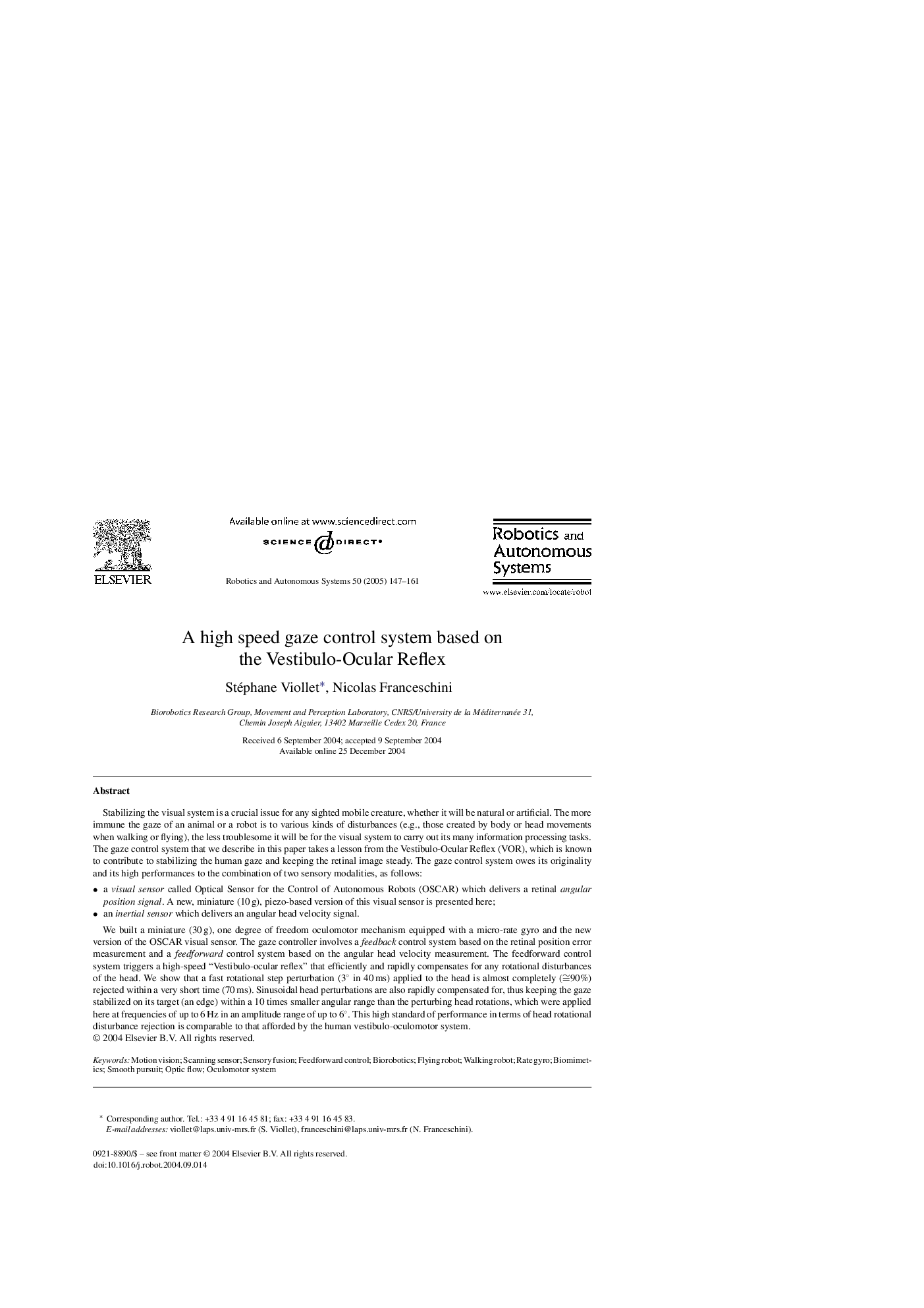| Article ID | Journal | Published Year | Pages | File Type |
|---|---|---|---|---|
| 9654562 | Robotics and Autonomous Systems | 2005 | 15 Pages |
Abstract
We built a miniature (30 g), one degree of freedom oculomotor mechanism equipped with a micro-rate gyro and the new version of the OSCAR visual sensor. The gaze controller involves a feedback control system based on the retinal position error measurement and a feedforward control system based on the angular head velocity measurement. The feedforward control system triggers a high-speed “Vestibulo-ocular reflex” that efficiently and rapidly compensates for any rotational disturbances of the head. We show that a fast rotational step perturbation (3° in 40 ms) applied to the head is almost completely (â
90%) rejected within a very short time (70 ms). Sinusoidal head perturbations are also rapidly compensated for, thus keeping the gaze stabilized on its target (an edge) within a 10 times smaller angular range than the perturbing head rotations, which were applied here at frequencies of up to 6 Hz in an amplitude range of up to 6°. This high standard of performance in terms of head rotational disturbance rejection is comparable to that afforded by the human vestibulo-oculomotor system.
Keywords
Related Topics
Physical Sciences and Engineering
Computer Science
Artificial Intelligence
Authors
Stéphane Viollet, Nicolas Franceschini,
